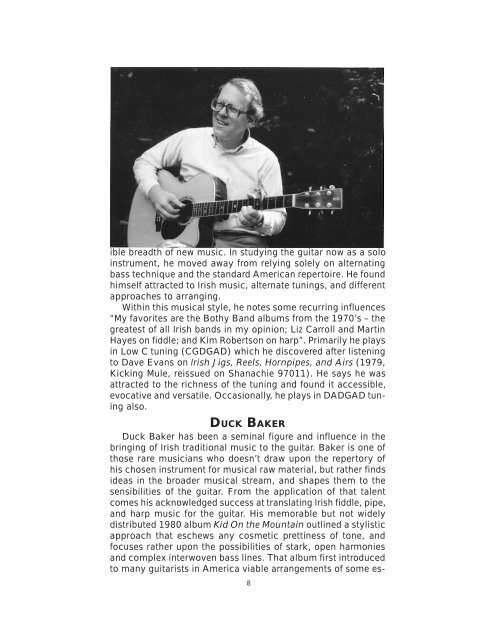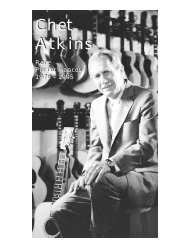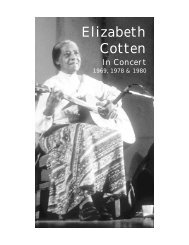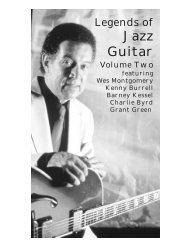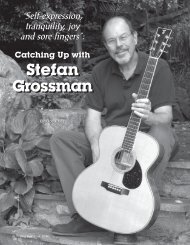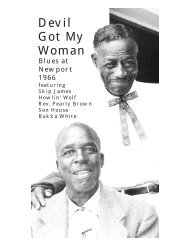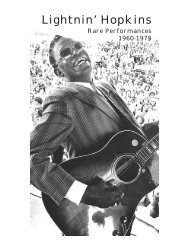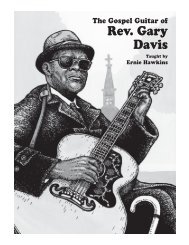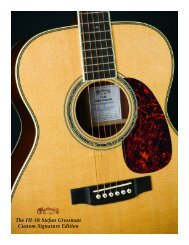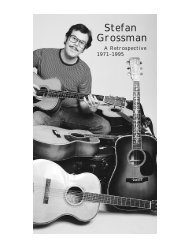Download PDF Booklet - Stefan Grossman's Guitar Workshop
Download PDF Booklet - Stefan Grossman's Guitar Workshop
Download PDF Booklet - Stefan Grossman's Guitar Workshop
You also want an ePaper? Increase the reach of your titles
YUMPU automatically turns print PDFs into web optimized ePapers that Google loves.
ible breadth of new music. In studying the guitar now as a solo<br />
instrument, he moved away from relying solely on alternating<br />
bass technique and the standard American repertoire. He found<br />
himself attracted to Irish music, alternate tunings, and different<br />
approaches to arranging.<br />
Within this musical style, he notes some recurring influences<br />
“My favorites are the Bothy Band albums from the 1970’s – the<br />
greatest of all Irish bands in my opinion; Liz Carroll and Martin<br />
Hayes on fiddle; and Kim Robertson on harp”. Primarily he plays<br />
in Low C tuning (CGDGAD) which he discovered after listening<br />
to Dave Evans on Irish Jigs, Reels, Hornpipes, and Airs (1979,<br />
Kicking Mule, reissued on Shanachie 97011). He says he was<br />
attracted to the richness of the tuning and found it accessible,<br />
evocative and versatile. Occasionally, he plays in DADGAD tuning<br />
also.<br />
DUCK BAKER<br />
Duck Baker has been a seminal figure and influence in the<br />
bringing of Irish traditional music to the guitar. Baker is one of<br />
those rare musicians who doesn’t draw upon the repertory of<br />
his chosen instrument for musical raw material, but rather finds<br />
ideas in the broader musical stream, and shapes them to the<br />
sensibilities of the guitar. From the application of that talent<br />
comes his acknowledged success at translating Irish fiddle, pipe,<br />
and harp music for the guitar. His memorable but not widely<br />
distributed 1980 album Kid On the Mountain outlined a stylistic<br />
approach that eschews any cosmetic prettiness of tone, and<br />
focuses rather upon the possibilities of stark, open harmonies<br />
and complex interwoven bass lines. That album first introduced<br />
to many guitarists in America viable arrangements of some es-<br />
8


